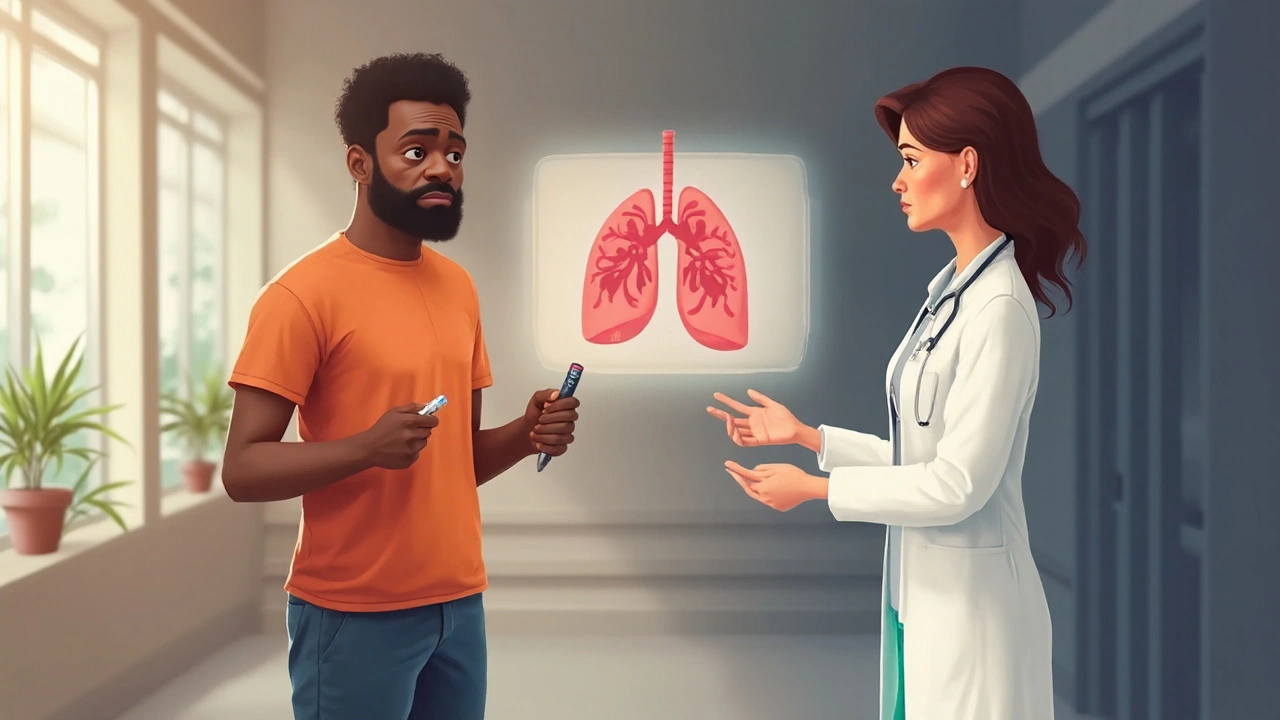Diabetes and Tuberculosis Interaction: What You Need to Know
If you have diabetes, the chance of catching tuberculosis (TB) is higher, and TB can mess up your blood sugar control. Understanding this two‑way street helps you keep both illnesses in check and avoid nasty surprises.
Why Diabetes Raises TB Risk
Diabetes weakens the immune system, making it harder for your body to fight off the bacteria that cause TB. High blood sugar also creates an environment where the germs can grow more easily. Studies show people with poorly controlled diabetes are up to three times more likely to develop active TB than those with normal glucose levels.
How TB Affects Blood Sugar
When TB strikes, your body releases stress hormones that push glucose up. On top of that, some TB drugs, especially rifampicin, speed up the breakdown of insulin and oral diabetes meds. This means the same dose of medication may stop working, leading to sudden spikes in blood sugar.
To stay safe, monitor your glucose more often during TB treatment—think twice a day instead of once. Keep a log of readings, meals, and any side effects. If you notice a pattern of high numbers, talk to your doctor about adjusting insulin or adding a short‑acting medication.
Nutrition matters too. TB often brings weight loss and loss of appetite, but you still need enough carbs to avoid hypoglycemia if you’re on insulin. Choose easy‑to‑digest foods like oatmeal, bananas, or smooth soups that give steady energy without overloading your stomach.
Exercise can be tricky when you’re fighting TB, but light activity such as short walks helps improve insulin sensitivity and lung function. Skip intense workouts until you feel stronger and your doctor gives the green light.
Medication interactions are a big deal. Rifampicin can lower the effectiveness of sulfonylureas, meglitinides, and even some newer drugs. If you’re on these, your doctor may switch you to a different TB regimen or adjust your diabetes meds. Never change doses on your own.
Vitamin D might be a helpful sidekick. Low vitamin D is linked to both worse TB outcomes and poorer glucose control. A simple blood test can tell you if you need a supplement, but always ask your healthcare provider first.
Don’t forget about TB screening. If you have diabetes, especially if you’ve lived in or traveled to areas with high TB rates, ask your doctor for a skin test or blood test. Early detection catches TB before it spreads and makes treatment smoother.
Remember to keep all appointments. TB treatment lasts at least six months, and your diabetes plan may need tweaks throughout. Consistent check‑ins let your doctor catch problems early and keep both conditions under control.
Finally, lean on support. Talk to family, join online groups, or find a local clinic that offers counseling. Managing two chronic illnesses is easier when you have people cheering you on and sharing tips.
Bottom line: diabetes makes TB more likely, TB makes blood sugar harder to control, and the medicines for each can clash. By watching your glucose, eating right, staying active, and staying in touch with your healthcare team, you can beat both challenges and stay healthy.
How Diabetes Increases the Risk of Pulmonary Tuberculosis - What You Need to Know
Explore how diabetes raises the chance of pulmonary tuberculosis, the biological reasons, clinical signs, treatment tips and public‑health impact in plain language.






